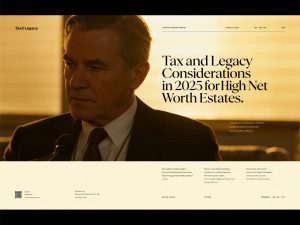Comprehensive Multi-Family Office Solutions for Global Asset Management The landscape of wealth management has undergone a profound transformation in recent years, with multi-family office solutions emerging as the premier choice for ultra-high-net-worth families seeking sophisticated approaches to preserving and growing their fortunes across international borders.
These specialized entities have evolved beyond traditional wealth management to offer truly comprehensive services that address the complex needs of families with substantial global assets. The fundamental premise behind these organizations is the recognition that wealth preservation requires more than just investment expertise—it demands a holistic understanding of legal structures, tax implications, risk management frameworks, and intergenerational planning considerations that span multiple jurisdictions and regulatory environments. Families with significant international exposure face unique challenges that conventional financial advisors simply cannot address with the requisite depth and breadth of expertise, making the specialized services offered by multi-family offices increasingly essential in today’s interconnected global economy.Modern multi-family office solutions distinguish themselves through their ability to provide truly customized approaches that reflect each family’s specific circumstances, values, and long-term objectives. Unlike single-family offices that serve only one wealthy clan, these multi-client organizations achieve significant economies of scale while
maintaining the personalized attention that discerning clients expect. The operational model typically involves teams of specialists across various disciplines—investment management, tax planning, legal compliance, risk assessment, and lifestyle services—working in concert to deliver integrated solutions. This collaborative approach ensures that all aspects of a family’s financial life receive appropriate attention without the fragmentation that often occurs when multiple advisors work in isolation. The sophistication of these services has reached unprecedented levels, with many offices employing advanced analytics, proprietary risk modeling tools, and cutting-edge technology platforms to provide clients with comprehensive visibility into their global financial positions and potential vulnerabilities.Strategic Family Office Wealth Management Approaches
Effective family office wealth strategies begin with a thorough understanding of each client’s complete financial picture, including assets held across various jurisdictions, legal structures, business interests, and personal objectives. The most successful approaches recognize that wealth management is not merely about maximizing returns but about achieving specific family goals while managing risks appropriately. These strategies typically encompass several key components: investment portfolio construction aligned with risk tolerance and return objectives, tax optimization across multiple countries, estate planning that considers various legal systems, philanthropic initiatives that reflect family values, and succession planning that ensures smooth transitions between generations. The complexity of these considerations necessitates a methodical approach that balances short-term opportunities with long-term preservation goals, all while navigating the constantly changing regulatory landscapes of different countries where the family maintains interests or residences.
Sophisticated family office wealth strategies increasingly incorporate alternative investments, direct private equity opportunities, real estate holdings, and other non-traditional asset classes that offer diversification benefits and potential for enhanced returns. The allocation to these alternative investments has been growing steadily as families seek to reduce correlation with public markets and capture the illiquidity premium available through longer-term commitments. However, these investments require specialized due diligence capabilities, ongoing monitoring mechanisms, and exit strategy planning that many individual families lack the resources to develop internally. This is where the collective expertise of a multi-family office becomes particularly valuable, providing access to investment opportunities that would otherwise be unavailable while managing the associated complexities through professional oversight. The integration of environmental, social, and governance considerations into investment decisions has also become a standard component of modern wealth strategies, reflecting the growing recognition that sustainable investing principles can align with both financial returns and family values.
International Wealth Preservation Techniques and Structures
The pursuit of effective international wealth preservation requires meticulous planning across multiple dimensions, including legal structures, asset location strategies, currency considerations, and political risk assessments. Families with global footprints must navigate complex webs of tax treaties, reporting requirements, and regulatory frameworks that vary significantly from one jurisdiction to another. The most successful preservation strategies typically involve establishing appropriate holding structures in jurisdictions that offer favorable treatment for specific asset types while ensuring compliance with all relevant reporting obligations. Trust arrangements, foundations, corporate vehicles, and other legal entities often form the backbone of these structures, providing both asset protection benefits and succession planning advantages. The selection of jurisdictions must consider not only current tax implications but also potential future changes in legislation, political stability, and the overall regulatory environment that could impact the safety and accessibility of family assets.
Advanced international wealth preservation techniques extend beyond mere tax optimization to encompass comprehensive risk management frameworks that address various threats to family fortunes. These include currency risk through strategic hedging programs, geopolitical risk through geographic diversification, regulatory risk through ongoing compliance monitoring, and operational risk through robust internal controls. The interconnected nature of global financial markets means that events in one part of the world can have ripple effects across entire portfolios, making systematic risk assessment an essential component of preservation strategies. Many multi-family offices employ sophisticated scenario analysis tools to model potential impacts of various economic, political, or market developments on client portfolios, allowing for proactive adjustments to asset allocations or hedging strategies. This forward-looking approach to risk management represents a significant advancement over traditional reactive methods and provides families with greater confidence in the resilience of their wealth preservation structures.

Private Client Portfolio Services for Discerning Families
Exceptional private client portfolio services form the cornerstone of comprehensive wealth management for families with substantial assets and complex financial situations. These services go far beyond basic investment management to encompass the entire spectrum of financial planning, risk assessment, and strategic decision-making that wealthy families require. The hallmark of superior portfolio services is their deeply personalized nature, with investment strategies tailored specifically to each client’s unique circumstances, objectives, and constraints. This customization extends to liquidity requirements, tax considerations, ethical preferences, and legacy planning goals, ensuring that portfolio construction aligns perfectly with the family’s overall financial plan. The integration of various asset classes—from traditional equities and fixed income to alternatives, real assets, and private investments—requires sophisticated modeling capabilities and ongoing rebalancing protocols to maintain target allocations while managing transaction costs and tax implications efficiently.
The evolution of private client portfolio services has been driven by increasing client sophistication and the growing complexity of global financial markets. Today’s services typically include comprehensive performance reporting across all assets regardless of location or custody arrangement, integrated tax planning that considers implications across multiple jurisdictions, and advanced analytics that provide insights into portfolio characteristics, risk exposures, and potential optimization opportunities. The use of technology has transformed these services, with client portals offering real-time visibility into portfolio performance, detailed attribution analysis, and scenario modeling capabilities that allow families to understand potential outcomes under various market conditions. This technological enhancement, combined with the human expertise of seasoned investment professionals, creates a powerful combination that enables families to make informed decisions about their wealth while benefiting from professional oversight and execution capabilities that would be difficult to replicate internally. The ongoing monitoring and adjustment of portfolios ensure that they remain aligned with changing market conditions and evolving family objectives over time.
Confidential Wealth Management for Ultra-High-Net-Worth Families
Discretion and privacy represent fundamental considerations in confidential wealth management services designed for families with significant assets and public profiles. The need for confidentiality extends beyond basic privacy concerns to encompass protection against various threats including cybersecurity risks, reputational challenges, and unwanted public attention. Multi-family offices addressing these concerns implement robust security protocols, strict information handling procedures, and comprehensive privacy safeguards that exceed standard industry practices. The operational infrastructure supporting these services typically includes secure communication channels, encrypted data storage, and strict access controls that ensure sensitive financial information remains protected at all times. The cultural orientation toward discretion permeates every aspect of service delivery, from the physical security of office locations to the background checks and confidentiality agreements required of all staff members who may interact with client information.
The approach to confidential wealth management recognizes that privacy requirements vary significantly among families based on their specific circumstances, public visibility, and personal preferences. Some families may prioritize complete anonymity in their financial affairs, while others may have legitimate business reasons for maintaining certain aspects of their wealth in more visible structures. The most effective wealth managers develop deep understanding of these nuances and tailor their approaches accordingly, ensuring that confidentiality measures align with actual risk profiles rather than applying one-size-fits-all solutions. This nuanced approach extends to communication preferences, document handling procedures, and even the selection of service providers who share similar commitment to discretion. The increasing globalization of wealth has introduced additional complexity to confidentiality considerations, as families must navigate different privacy regulations and cultural norms across the various jurisdictions where they maintain assets or business interests. Navigating these cross-border privacy considerations requires specialized expertise that few organizations outside of multi-family offices can provide effectively.
Integrated Global Asset Management Frameworks
Sophisticated multi-family offices employ comprehensive family office wealth strategies that integrate various aspects of global asset management into cohesive frameworks designed to optimize outcomes while managing risks appropriately. These frameworks typically begin with thorough asset mapping exercises that identify all holdings regardless of location or custody arrangement, creating complete visibility into the family’s global financial position. This foundational step enables informed decision-making about asset allocation, risk exposure, and strategic planning initiatives. The integration of various asset classes—including publicly traded securities, private investments, real estate holdings, business interests, and personal assets—requires sophisticated systems capable of aggregating data from multiple sources and presenting it in coherent formats that facilitate analysis and decision-making. The technological infrastructure supporting these frameworks has become increasingly advanced, with many offices utilizing proprietary platforms that provide real-time visibility into portfolio performance, risk metrics, and compliance status across all jurisdictions.
The implementation of these integrated frameworks involves ongoing monitoring and adjustment processes that ensure portfolios remain aligned with target allocations and risk parameters despite market fluctuations and changing family circumstances. This dynamic approach to asset management represents a significant advancement over traditional static allocation models, recognizing that wealth preservation requires active management rather than passive adherence to predetermined strategies. The integration of tax considerations into investment decision-making represents another critical component of these frameworks, with trades and rebalancing activities timed to optimize after-tax returns rather than merely focusing on pre-tax performance metrics. This tax-aware approach to portfolio management can significantly enhance long-term wealth preservation outcomes, particularly for families with complex tax situations involving multiple jurisdictions. The coordination of these various elements—investment management, tax optimization, risk control, and strategic planning—requires sophisticated coordination mechanisms and clear communication channels that ensure all aspects of the family’s financial life work together harmoniously toward common objectives.
Risk Management Methodologies for Global Families
Comprehensive risk management represents an essential component of multi-family office solutions designed for families with international asset bases and complex financial situations. The risk landscape facing these families extends far beyond market volatility to include currency fluctuations, political instability, regulatory changes, cybersecurity threats, and operational vulnerabilities across various jurisdictions. Effective risk management methodologies begin with thorough risk assessment processes that identify potential threats across all aspects of the family’s financial ecosystem. This holistic approach considers not only investment risks but also legal, operational, reputational, and succession-related risks that could impact wealth preservation objectives. The development of appropriate risk mitigation strategies typically involves diversification across geographies, asset classes, and currencies; implementation of hedging programs where appropriate; establishment of robust internal controls; and development of contingency plans for various scenarios that could threaten family assets.
The sophistication of risk management within multi-family offices has increased significantly in response to growing client awareness of various threats and the increasing complexity of global financial markets. Many offices now employ dedicated risk management teams that utilize advanced analytics, scenario modeling tools, and proprietary risk assessment frameworks to provide clients with comprehensive visibility into their risk exposures and potential vulnerabilities. This professional approach to risk management represents a significant value proposition for families that lack the internal resources to develop similar capabilities independently. The ongoing monitoring of risk metrics ensures that portfolios remain within established parameters and that emerging risks receive appropriate attention before they can materially impact wealth preservation objectives. The integration of risk management considerations into investment decision-making processes ensures that risk-adjusted returns receive appropriate emphasis rather than focusing solely on absolute performance metrics. This disciplined approach to risk management has proven particularly valuable during periods of market stress or geopolitical uncertainty, providing families with greater confidence in the resilience of their wealth preservation strategies.
Future Trends in Multi-Family Office Services
The evolution of multi-family office solutions continues apace as changing client expectations, technological advancements, and regulatory developments drive innovation across the industry. Several emerging trends promise to reshape the landscape of wealth management for ultra-high-net-worth families in the coming years. The increasing emphasis on sustainability and impact investing reflects growing client interest in aligning investment portfolios with personal values and societal objectives. This trend extends beyond mere exclusionary screening to include proactive investment in solutions addressing environmental challenges, social inequities, and governance improvements. The integration of artificial intelligence and machine learning technologies into investment processes and risk management frameworks represents another significant development, enabling more sophisticated analysis, pattern recognition, and decision support capabilities than previously possible. These technological advancements promise to enhance the quality of insights available to families while potentially reducing costs through increased efficiency.
The globalization of wealth continues to accelerate, driving demand for international wealth preservation strategies that can navigate increasingly complex cross-border considerations. Families with assets in multiple countries require sophisticated approaches to tax optimization, regulatory compliance, and currency management that few organizations outside of multi-family offices can provide effectively. The professionalization of family office services has reached new levels, with many organizations adopting institutional-grade processes, controls, and reporting standards that were previously found only within large financial institutions. This elevation of professional standards benefits clients through improved service quality, enhanced risk management, and greater operational resilience. The ongoing consolidation within the industry through mergers and acquisitions activity promises to create larger organizations with greater resources and broader capabilities, potentially enhancing the value proposition for clients seeking comprehensive solutions across the entire spectrum of wealth management needs. These evolving trends ensure that multi-family offices will continue to play essential roles in helping wealthy families navigate the complexities of preserving and growing their fortunes across generations and international borders.




